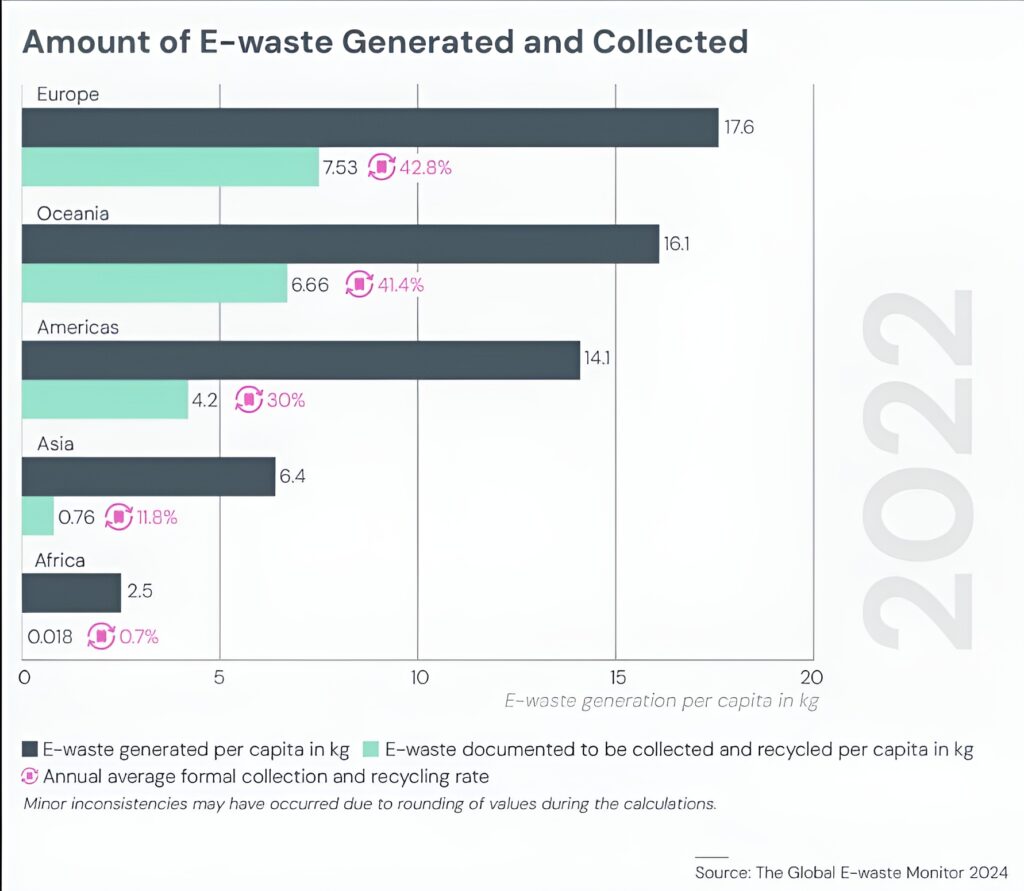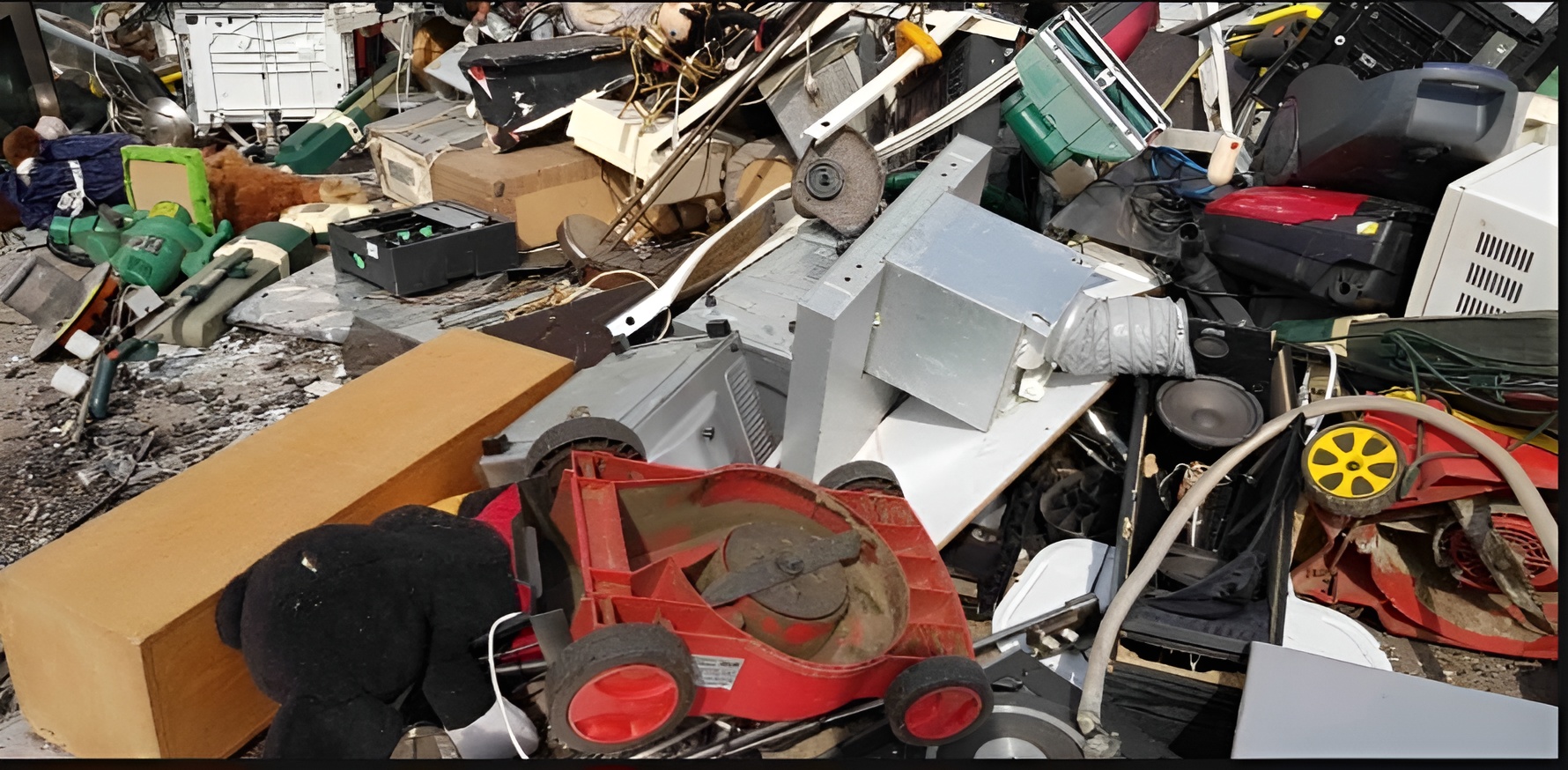Global e-waste generation rising 5 times faster than recycling: UN GEM report
The world’s electronic waste generation is increasing five times faster than documented e-waste recycling. The United Nations‘ fourth Global E-waste Monitor (GEM) report reveals that waste generation is surging at an alarming rate. In 2022 alone, 62 million tonnes of e-waste would fill 1.55 million 40-tonne trucks, encircling the equator.

Waste generation is surging at an alarming rate
In a press statement, the United Nations Institute for Training and Research (UNITAR) says that e-waste is projected to surge by 32 pc to 82 million tonnes by 2030. This alarming trend signifies the squandering of billions of dollars in strategically valuable resources, with only 1 pc of rare earth element demand currently met through e-waste recycling efforts.
Less than one quarter or 22.3 pc of the e-waste generated in 2022 was properly collected and recycled. This leaves an alarming USD 62 billion worth of recoverable natural resources unaccounted for, while simultaneously exacerbating pollution concerns globally.
The report anticipates a decline in the documented collection and recycling rate from 22.3 pc in 2022 to a mere 20 pc by 2030.

Vanessa Gray
The widening e-waste gap is exacerbated by technological advancements, higher consumption, limited repair options, and inadequate e-waste management infrastructure. Achieving 60 pc e-waste collection and recycling rates by 2030 could save USD 38 billion.

Nikhil Seth
“The Global E-waste Monitor shows that we are currently wasting USD 91 billion in valuable metals due to insufficient e-waste recycling. We must seize the economic and environmental benefits of proper e-waste management; otherwise, the digital ambitions of our future generations will face significant risks,” says Vanessa Gray, Head, of the Environment and Emergency Telecommunications Division, ITU Telecommunication Development Bureau.
“Amidst the hopeful embrace of solar panels and electronic equipment to combat the climate crisis and drive digital progress, the surge in e-waste requires urgent attention,” says Nikhil Seth, Executive Director, UNITAR.

Cosmas Luckyson Zavazava
“From discarded televisions to dumped telephones, an enormous amount of e-waste is generated around the world. The latest research shows that the global challenge posed by e-waste is only going to grow. With less than half of the world implementing and enforcing approaches to manage the problem, this raises the alarm for sound regulations to boost collection and recycling. The Global E-waste Monitor is the world’s foremost source for e-waste data allowing us to track progress overtime and to make critical decisions when it comes to transitioning to a circular economy for electronics,” says Cosmas Luckyson Zavazava, Director, ITU Telecommunication Development Bureau.
“No more than 1 pc of demand for essential rare earth elements is met by e-waste
. Simply put, business as usual can’t continue. This new report represents an immediate call for greater investment in infrastructure development, more promotion of repair and reuse, capacity building, and measures to stop illegal e-waste shipments. And the investment would pay for itself in spades,” says Kees Baldé, lead author of the report at UNITAR.
“Many in today’s society use multiple computers and phones, an ever-growing number of new appliances, monitors and sensors, e-bikes, e-scooters, clothes, toys, and furniture with embedded electronics, electric tools, and energy-saving equipment such as LEDs, photovoltaics, and heat pumps. Urban and remote areas are increasingly connected to the Internet, and a growing number of data centres cater to the needs of the digital transformation. In the face of all this, concrete steps are urgently needed to address and reduce e-waste. Improved e-waste management could result in a global net positive of USD 38 billion, representing a significant economic opportunity while addressing climate change and health impacts,” says Ruediger Kuehr, Senior Manager, Sustainable Cycles (SCYCLE) Programme, UNITAR / Adjunct Professor, University of Limerick, in Ireland.












